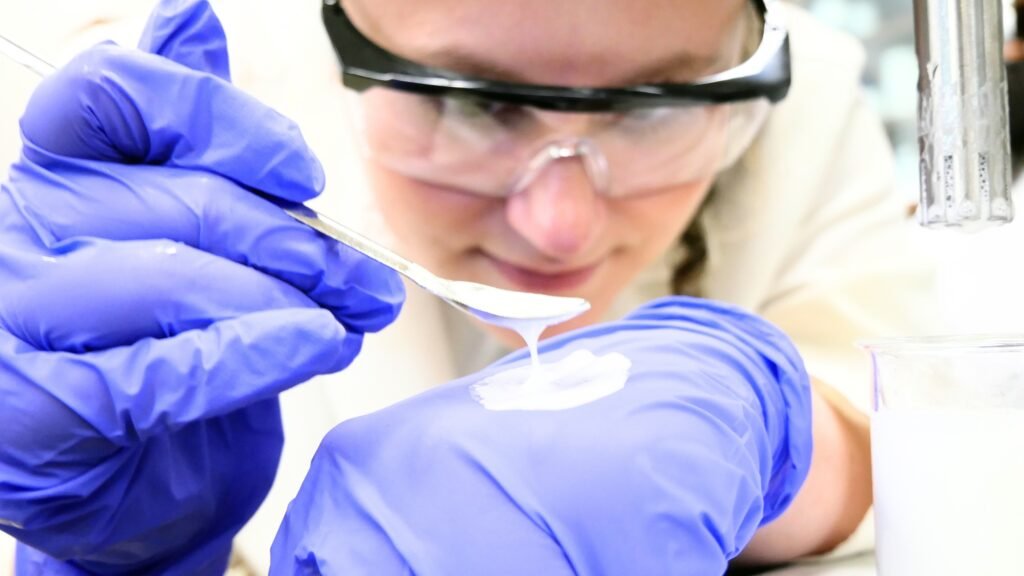Revolutionizing Sunscreen: How Eco-Friendly Innovations Promote Health and Sustainability
The Importance of Sunscreen
On the vibrant shores of Miami, sunscreen isn’t just a summer essential—it’s a cornerstone of public health. With rising concerns about both personal health and environmental impact, innovative research is transforming the way we view and develop sunscreen products.
Researching Safer Formulations
Casey Posner’s Vision
At the University of Miami, Casey Posner, a Ph.D. student in chemical, environmental, and materials engineering, is on a mission to ensure that sunscreen is both effective and environmentally friendly. Under the mentorship of Professor Samiul Amin, she is pioneering new formulations in the Soft Matter Product Design Lab.
“I really love chemistry and figuring out how things work,” says Posner. “That’s why I want to put out a more accurate narrative of how these products work and protect people. It’s a public health issue.”
Eco-Friendly Ingredients
A key component of Posner’s formulations is biosurfactants—biofermented substances that replace synthetic emulsifiers. These ingredients are:
- Biodegradable: Designed to break down naturally.
- Derived from food waste: Emphasizing sustainable sourcing.
- Ethically sourced: Addressing consumer demand for accountability.
While the cost of creating biosurfactants is a barrier for many companies, Posner aims to demonstrate their value in future sunscreen products.
Balancing Safety and Effectiveness
Rethinking Natural Ingredients
Posner emphasizes the need to approach natural ingredients with caution:
“Natural isn’t always better. For example, snake venom is natural, but it’s a poison. We need to find the right ingredients and formulations that work well for both the human body and the environment.”
Innovative Testing Methodologies
Partnering with Delia Shelton from the Department of Biology, Posner employs zebrafish for ecotoxicity testing due to their genetic similarities to humans. This dual approach allows her to evaluate:
- Safety and efficacy: Understanding how sunscreen interacts with human skin.
- Environmental impact: Analyzing ingredients’ behavior in aquatic systems, particularly concerning ocean acidification.
Posner collaborates with experts at the Miller School of Medicine to ensure that her formulations meet FDA standards for skin health and SPF effectiveness.
A Holistic Approach to Sunscreen Research
Unlike typical studies that focus narrowly on specific ingredients, Posner examines entire formulations. This holistic approach aids in:
- Understanding ingredient interactions.
- Enhancing product efficacy through detailed mechanistic insights.
- Creating a “toolbox” for manufacturers, transforming the sunscreen landscape.
Industry Impact and Future Directions
Later this month, Posner will present her groundbreaking findings at the Sunscreen Symposium, hosted by the Society of Cosmetic Chemists. This event unites industry leaders to discuss the future of sun care.
Inclusively, the bio-based techniques developed for sunscreen have the potential to revolutionize other sectors, including:
- Food production
- Paints and coatings
- Agricultural pesticides
Conclusion: A Commitment to Public Health
At the core of Posner’s research is a commitment to design products that not only protect consumers but also nurture the planet.
“These are products being designed to help and protect people,” she states. “I want to make something that can improve someone’s life.”
As studies continue and new technologies emerge, the future of sunscreen looks promising—a landscape where safety, effectiveness, and environmental sustainability coalesce for a healthier tomorrow.
Additional Resources
- Eco-Friendly Sunscreen: What to Look For
- The Importance of Biodegradable Ingredients in Skin Care
- Sunscreen Symposium: Innovations in Sun Care
For more information on innovative sunscreens and eco-friendly products, refer to the links provided.


